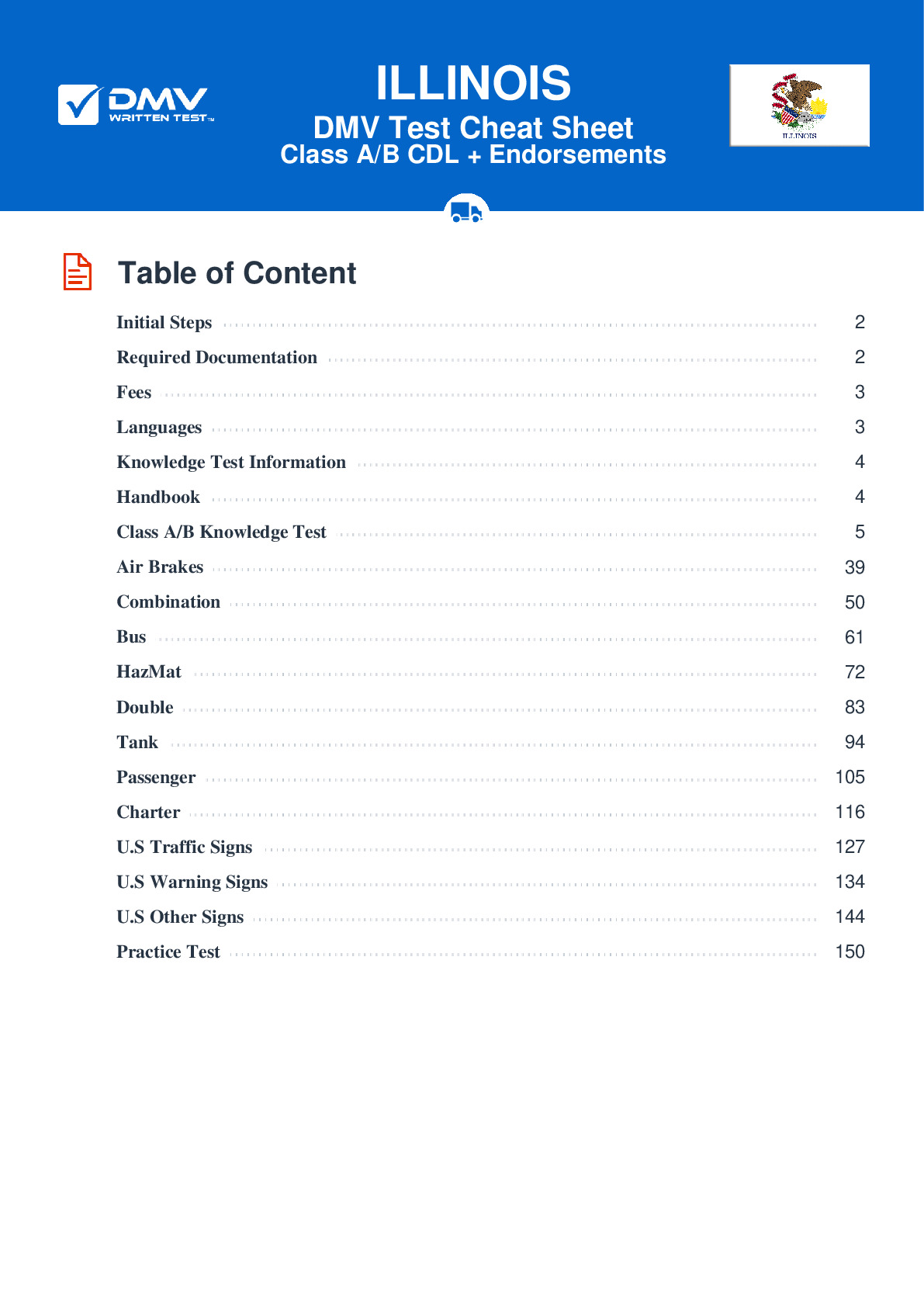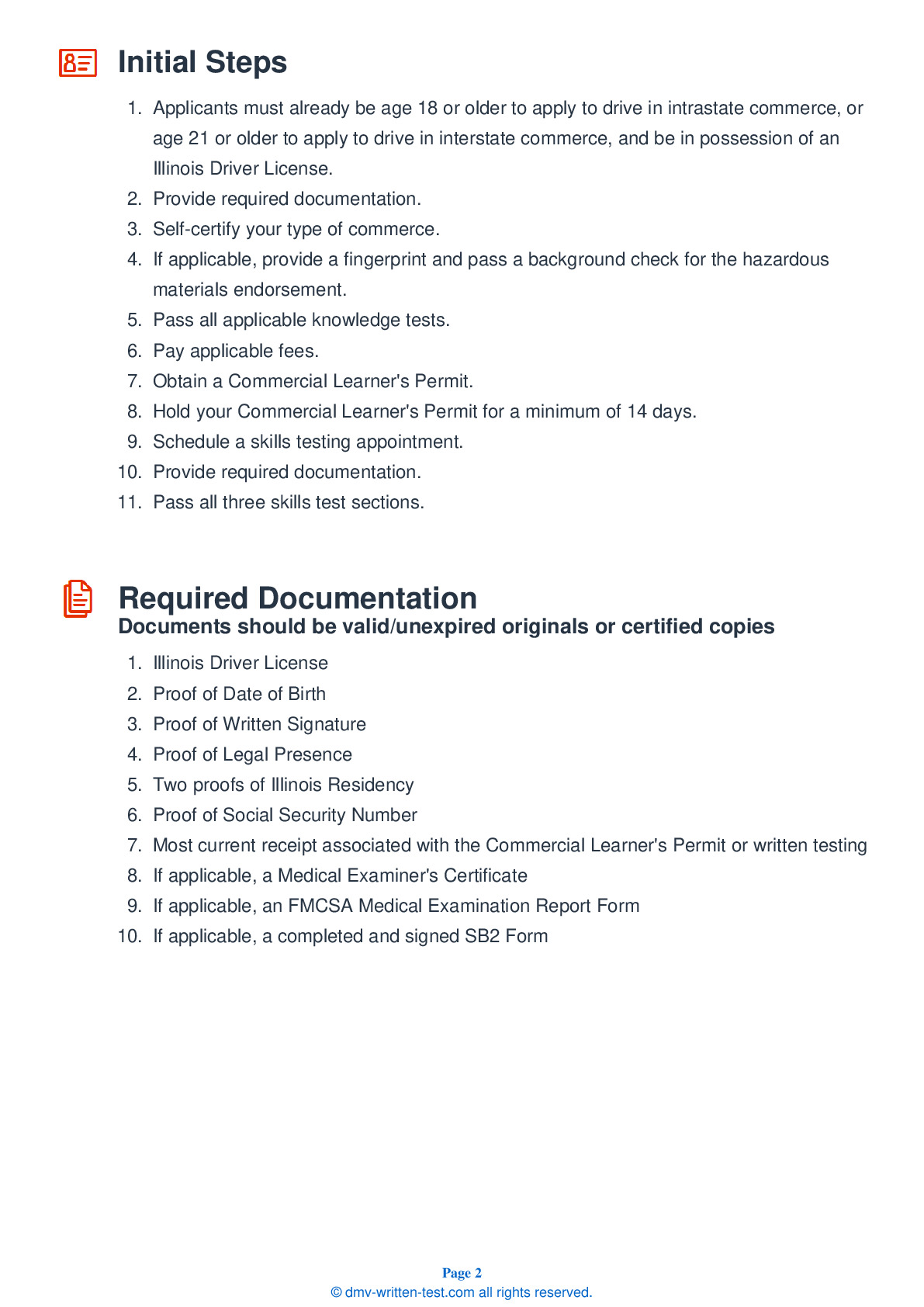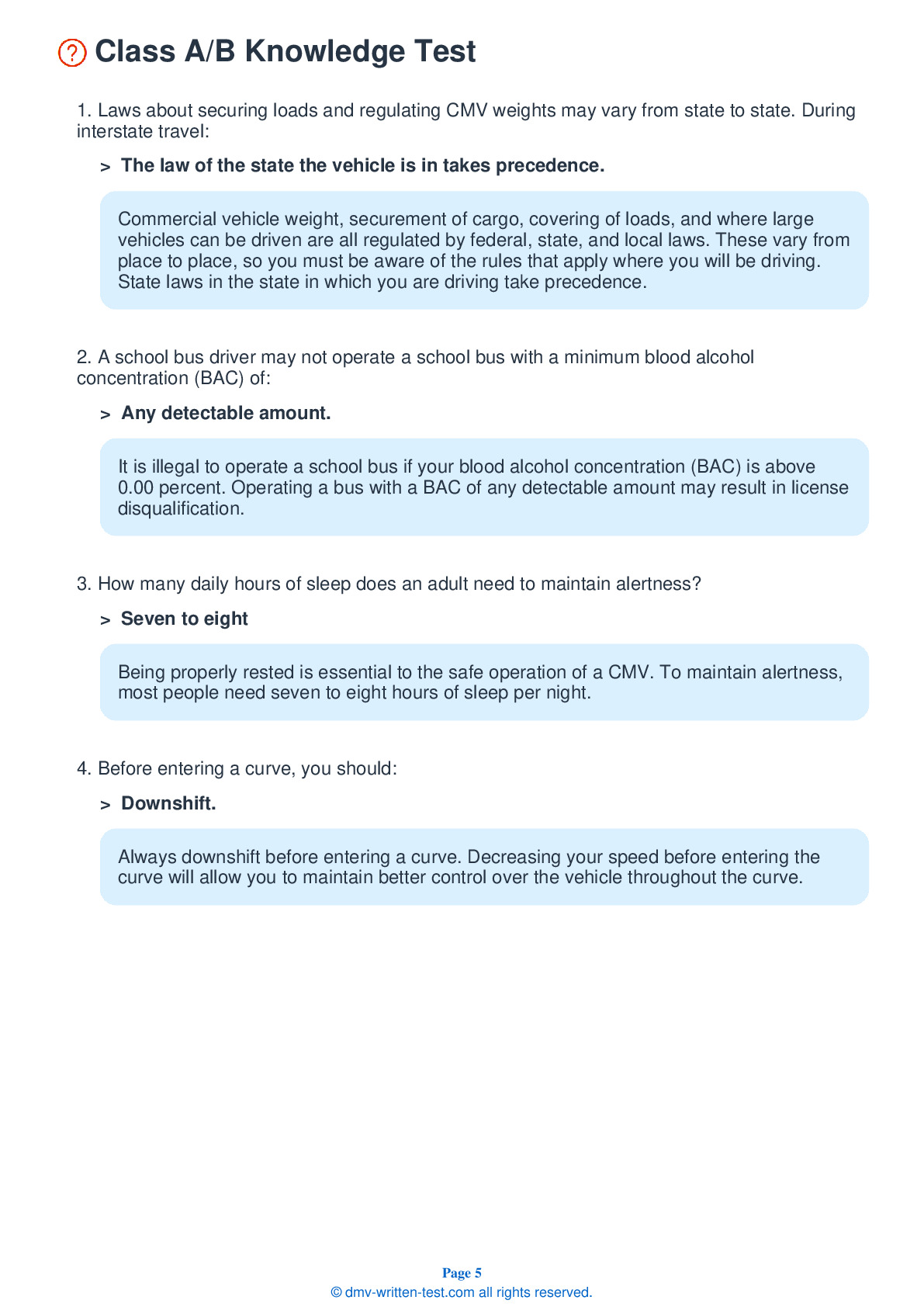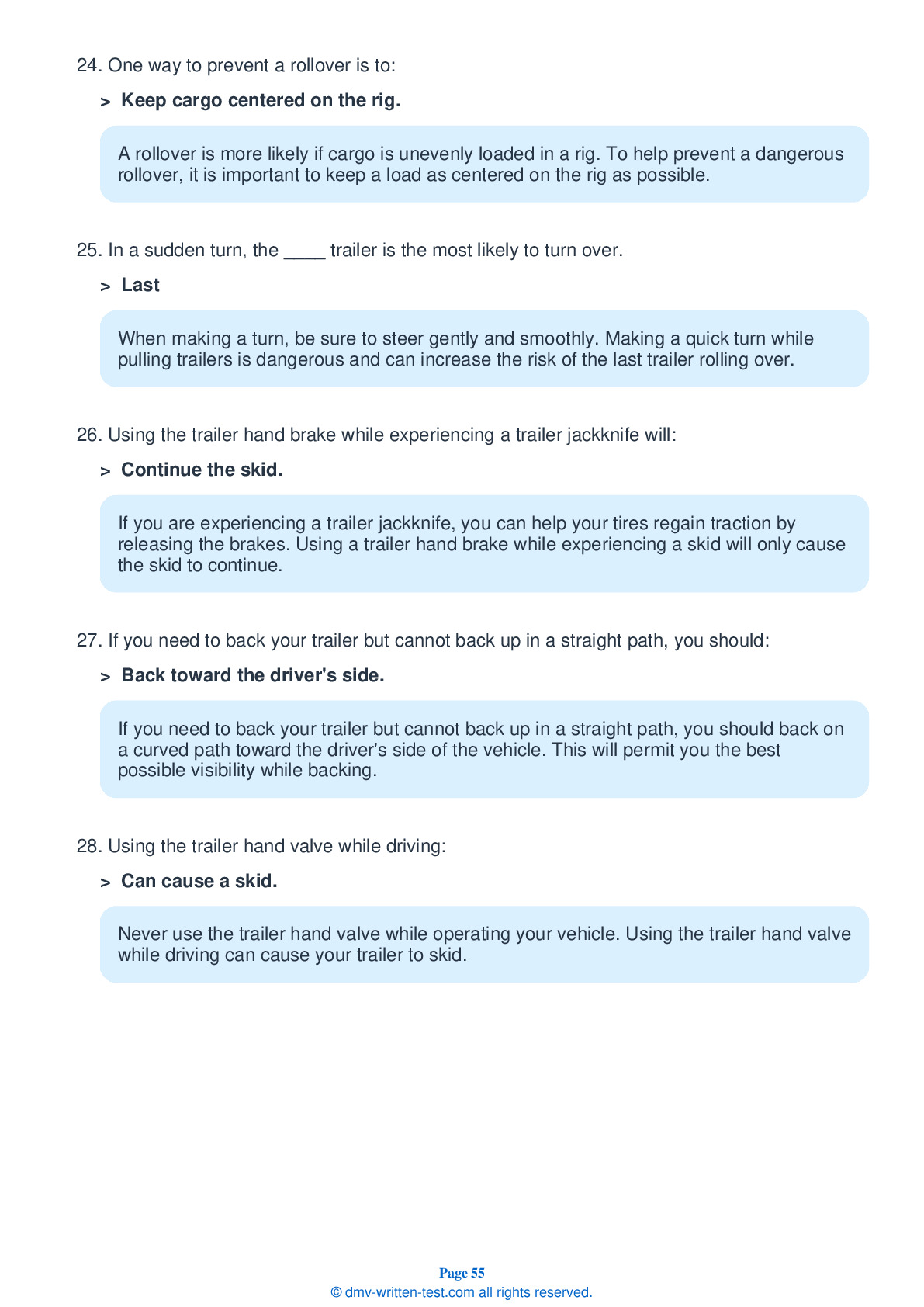Combination
All applicants who are applying for a Class A CDL should be prepared to take the Combination test. This test covers information found in Section 6 of the Illinois Commercial Driver's License Study Guide. Section 6 provides the information needed to safely operate tractor-trailers, doubles, triples, and straight trucks with trailers. The test is made up of 20 multiple-choice questions, and applicants will need to correctly answer a minimum of 16 questions to pass. The Combination test is not a replacement for the Double/Triple endorsement test.
Number of Question
Passing Score
8. Fully-loaded rigs:
Explanation
Because the weight of cargo gives them a higher center of gravity, fully-loaded rigs are 10 times more likely to roll over in a crash than empty rigs.
9. If a trailer begins to skid, the driver should:
Explanation
If your trailer starts to skid while you are braking, you should release the brakes and allow them to begin to regain traction. Once its wheels have regained their grip on the road, the trailer will begin to straighten out and follow the tractor.
10. To help prevent a rollover, cargo should be:
Explanation
To reduce the risk of a rollover, the weight of cargo in a trailer should be kept as low to the ground as possible. Weight should not be placed primarily on one side of the trailer as this could make the trailer lean, increasing the risk of a rollover.
11. The easiest way to recognize that your trailer has begun to skid is to:
Explanation
The easiest way to spot a trailer skid is to use your mirrors. Any time you brake hard, check your mirrors to ensure that your trailer is still in its proper position.
12. When traveling more slowly than 40 mph, maintain at least ____ of following distance per every 10 feet of your vehicle.
Explanation
At speeds below 40 mph, you should allow at least one second of following distance for every 10 feet of your vehicle. Follow the same formula when traveling at faster speeds, then add one additional second to your following distance. Remember that larger vehicles require more space to stop than smaller vehicles.
13. When driving a combination rig, following distance should be:
Explanation
In comparison to driving a single vehicle, you should maintain an extended following distance when driving a combination rig. Combinations require longer stopping distances than smaller vehicles.
14. Trailers with low underneath clearance may be difficult to drive:
Explanation




